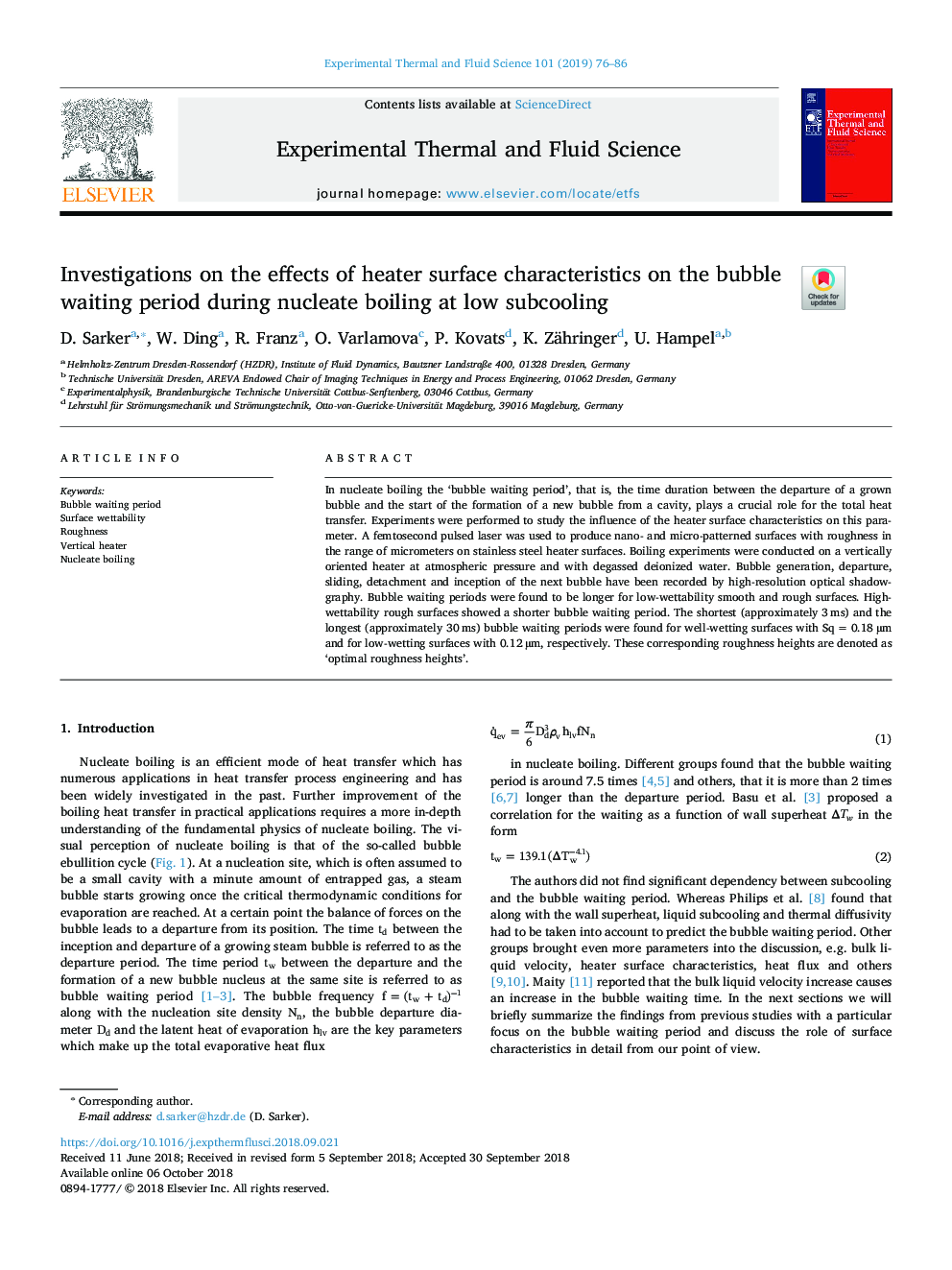| Article ID | Journal | Published Year | Pages | File Type |
|---|---|---|---|---|
| 11259790 | Experimental Thermal and Fluid Science | 2019 | 11 Pages |
Abstract
In nucleate boiling the 'bubble waiting period', that is, the time duration between the departure of a grown bubble and the start of the formation of a new bubble from a cavity, plays a crucial role for the total heat transfer. Experiments were performed to study the influence of the heater surface characteristics on this parameter. A femtosecond pulsed laser was used to produce nano- and micro-patterned surfaces with roughness in the range of micrometers on stainless steel heater surfaces. Boiling experiments were conducted on a vertically oriented heater at atmospheric pressure and with degassed deionized water. Bubble generation, departure, sliding, detachment and inception of the next bubble have been recorded by high-resolution optical shadowgraphy. Bubble waiting periods were found to be longer for low-wettability smooth and rough surfaces. High-wettability rough surfaces showed a shorter bubble waiting period. The shortest (approximately 3â¯ms) and the longest (approximately 30â¯ms) bubble waiting periods were found for well-wetting surfaces with Sqâ¯=â¯0.18â¯Âµm and for low-wetting surfaces with 0.12â¯Âµm, respectively. These corresponding roughness heights are denoted as 'optimal roughness heights'.
Related Topics
Physical Sciences and Engineering
Chemical Engineering
Fluid Flow and Transfer Processes
Authors
D. Sarker, W. Ding, R. Franz, O. Varlamova, P. Kovats, K. Zähringer, U. Hampel,
